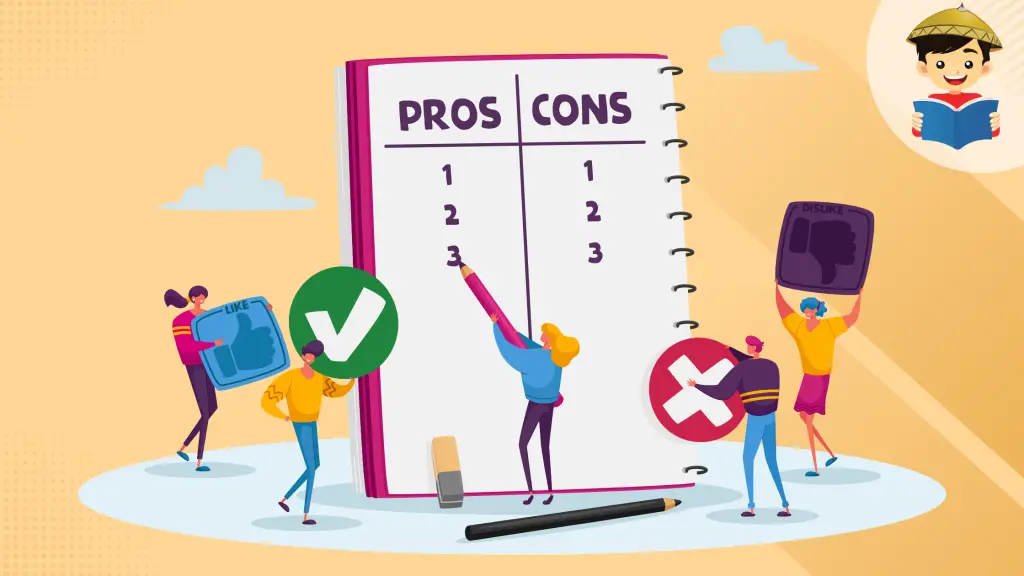Alternative Courses of Action in Case Study: Examples and How To Write

The ultimate goal of creating a case study is to develop a feasible action that can solve the problem it raised.
One way to achieve this is by enumerating all the possible solutions for your case study’s subject. The portion of the case study where you perform this is called ACA or Alternative Courses of Action.
Are you struggling with writing your case study’s ACA? Do not worry; we have provided you with the most detailed guide on writing the Alternative Courses of Action (ACA) of a case study.
Table of Contents
What Are Alternative Courses of Action (ACA) in a Case Study?
Alternative Courses of Action (ACA) are the possible actions a firm or organization can implement to address the problem indicated in the case study. These are suggested actions that a firm can consider to arrive at the most feasible and effective solution to the problem.
This portion doesn’t provide the actual and optimal solution yet. Instead, it contains proposed alternatives that will still undergo an evaluation of their respective advantages and disadvantages to help you come up with the best solution.
The ACA you will offer and indicate will be based on your case study’s SWOT analysis in the “Areas of Consideration” portion. Thus, a SWOT analysis is performed first before writing the ACA.
What Is the Importance of Alternative Courses of Action (ACA) in a Case Study?
Given the financial, logistical, and operational limitations, developing solutions that the firm can perform can be challenging. By enumerating and evaluating the ACA of your case study, you can filter out the alternatives that can be a potential solution to the problem, given the business’s constraints1. This makes your proposed solutions feasible and more meaningful.
How To Write Alternative Courses of Action in Case Study
Here are the steps on how to write the Alternative Courses of Action for your case study:
1. Analyze the Results of Your SWOT Analysis

Using the SWOT analysis, consider how the firm can use its strengths and opportunities to address its weaknesses, mitigate threats, and eventually solve the case study’s problem.
Suppose that the case study’s problem is declining monthly sales, and the SWOT analysis showed the following:
- Strength: Creative marketing team
- Opportunity: Increasing trend of using social media to promote products
Then, you may include an ACA about developing the digital marketing arm of the firm to attract more customers and boost monthly sales. This can also address one of the possible threats the firm faces, which is increasing direct marketing costs.
2. Write Your Proposed Solutions/Alternative Courses of Action (ACA) for Your Case Study’s Problem

Once you have reviewed your SWOT analysis and come up with possible solutions, it’s time to write them formally in your manuscript. Each solution does not have to be too detailed and wordy. State the specific action that the firm must perform concisely.
Going back to our previous example in Step 1, here is one of the possible ACA that can be included:
ACA #1: Utilize digital platforms such as web pages and social media sites as an alternative marketing platform to reach a wider potential customer base. Digital marketing, together with the traditional direct marketing strategy currently employed, maximizes the business’ market presence, attracting more customers, and potentially driving revenues upward.
In our example above, there is a clear statement of the firm’s action: to use web pages and social media sites to reach more potential customers and increase market presence. Notice how the ACA above provides only an overview of “what to do” and not a complete elaboration on “how to do it.”
3. Identify the Advantages and Disadvantages of Each ACA You Have Proposed

After specifying the ACA, you must evaluate them by stating their respective advantages (pros) and disadvantages (cons). In other words, you must state how your ACA favors the firm (advantages) and its downsides and limitations (disadvantages).
Again, your evaluation does not have to be too detailed but make sure that it is relevant to the ACA that it pertains to.
Let’s return to the ACA we developed from step 2, utilizing digital platforms (e.g., social media sites) to reach more potential customers. What do you think will be the pros and cons of this ACA?
Let’s start with its potential benefits (advantages). Using digital platforms is cheaper than using print ads or direct marketing. So, this will save some funds for the firm. In short, it is cost-effective.
Second, digital platforms offer analytical tools to measure your ads’ reach, making it easier to evaluate people’s perceptions of your offering.
Third, using social media sites makes communicating with any potential customer easier. You can quickly respond to their queries, especially if they are interested in your product.
Lastly, you can reach as many types of people as possible by taking advantage of the internet algorithm.
Now, let us consider its disadvantages2. First, using digital marketing takes time and effort to learn, and you must be able to adapt quickly to the changes in trends and new strategies to keep up with the competition.
Second, you must deal with the increasing market competition, as many businesses already use digital platforms.
Third, you have to deal with negative feedback from your customers that are visible to the public and may affect their perception of your brand.
After pondering over the pros and cons of your ACA, it’s time to write them concisely in your manuscript. You can present it in two ways: by tabulating it or by simply listing them.
Example in Table Form:
| ACA #1: Utilize digital platforms such as webpages and social media sites as alternative marketing platforms to reach a wider potential customer base. | Advantages – Cost-effective – Provide analytical tools to evaluate ad reach and performance – A more accessible and more convenient platform to communicate with potential customers and address their queries and concerns – Maximize reach to potential customers anywhere Disadvantages – Time-consuming and challenging to learn due to changes in trends and strategies – Increasing market competition as many businesses also use digital platforms. – Negative feedback reflected in the digital platform could affect people’s perception of the firm |
Examples of Alternative Courses of Action (ACA) in a Case Study
Example 1
Case Study Problem: Xenon Pastries faces a problem handling larger orders as Christmas Day approaches. With an estimated 15% increase in customer demand, this is the most significant increase in their daily orders since 2012. The management aims to maximize profit opportunities given the rise in customer demand.
ACA #1: Hire part-time workers to increase staff numbers and meet the overwhelming seasonal increase in customer orders. Currently, Xenon Pastries has a total of 9 workers who are responsible for the accommodation of orders, preparation, and delivery of products, and addressing customers’ inquiries and complaints. Hiring 2 – 3 part-time workers can increase productivity and meet the daily order volume.
Advantages
- Do not require too much effort to implement since hiring announcements only require signages or social media postings
- High certainty of finding potential workers due to the high unemployment rate
- Improve overall productivity of the business and the well-being of other workers since their workload will be lessened
Disadvantages
- Increase in operating expense in the form of wages to the new workers
- Managing more employees and monitoring their performance can be challenging
- New workers might find it challenging to adapt essential skills required in the operation of the business
ACA #2: Increase the prices of Xenon pastries’ products to increase revenues. This option can maximize Xenon Pastries’ profit even if not all customers’ orders are accommodated.
Advantages
- Cost-effective
- Easy to implement since it only requires changing the price tags of the products
- If customers’ desire to buy the products does not change, the price increase will certainly increase the business’ revenue
Disadvantages
- Some customers might be discouraged from buying because of an increase in prices
- There’s a possibility that the increase in the price of the products will make it more expensive relative to competitors’ products
Example 2
Case Study Problem: Delta Motors has been manufacturing motorcycles for ten years. Recently, the business suffered a gradual shrink in its quarterly revenues due to the increasing popularity of traditional and newly-developed electric bikes. Delta Motors seeks a long-term strategy to attract potential customers to bounce back sales.
ACA #1: Develop a “regular installment payment” scheme to attract customers who wish to purchase motorcycles but have insufficient lump-sum money to acquire one. This payment scheme allows customers to pay an initial deposit and the remaining amount through smaller monthly payments.
Advantages
- Enticing for middle to low-income individuals who comprise a large chunk of the population
- Requires low initial capital to implement
- Provides a new source of monthly income streams that can benefit the financial standing of the company
Disadvantages
- Risk of default or delays in installment payments
- Requires additional human resources to manage and collect installment payments
- The payment scheme requires time to gain returns due to the periodic flow of funds
- Requires a careful creation of guidelines and terms and conditions to ensure smooth facilitation of the installment payment scheme
ACA #2: Introduce new motorcycle models that can entice different types of customers. These models will feature popular designs and more efficient engines.
Advantages
- This may capture the public’s interest in Delta Motors, which can lead to an increase in the number of potential customers and earning opportunities
- Enables the business to keep up with the intense market competition by providing something “fresh” to the public
- Provides more alternatives for those who already support Delta Motors, strengthening their loyalty to the brand
Disadvantages
- Conceptualization of a new model takes a lot of brainstorming to test its feasibility and effectiveness
- Requires sufficient funds to sustain the investment for the development of a new model
- It requires effective marketing strategies to promote the new model to the public
Tips and Warnings
- Do not include in this portion your case study’s conclusion. Think of ACA as a list of possible ways to address the problem. In other words, you suggest the possible alternatives to be selected here. The “Recommendation” portion of your case study is where you pick the most appropriate way to solve the problem.
- Use statistical data to support the advantages and disadvantages of each ACA. Although this is optional, presenting numerical data makes your analysis more concrete and factual than just stating them descriptively.
- Do not fall into the “meat sandwich” trap. This happens when you intently make some of the alternatives less desirable so that your preferred choice stands out. This can be done by refusing to elaborate on their benefits or excessively concentrating on their disadvantages. Make sure that each ACA has potential and can be implemented realistically.
Frequently Asked Questions
1. How many Alternative Courses of Action (ACA) can a case study have?
Sometimes your instructor or teacher will tell you the required number of ACA that must be included in your case study. However, there’s no “standard” limit to how many ACA you can indicate.
2. What is the difference between Alternative Courses of Action (ACA) and Recommendations?
As mentioned earlier, the case study’s ACA aims to enumerate all possible solutions to the problem. It is not the stage where you state the “final” action you deem most appropriate to address the issue. The case study portion where you explicitly mention your “best” alternative is called the “Recommendation.”
To help you understand the point above, let’s return to our Delta Motors example. In our previous section, we have provided two ACA that can solve the problem, namely (1) developing a regular installment payment plan and (2) introducing a new motorcycle model.
Suppose that upon careful analysis and evaluation of these ACA, you came up with ACA #2 as the more fitting solution to the problem. When you write your case study’s recommendation, you must indicate the ACA you chose and your reasons for selecting it.
Here’s an example of the Recommendation of the case study:
Recommendation
Introducing new motorcycle models that feature popular designs and more efficient engines to entice different types of customers is the most promising alternative course of action that Delta Motors can implement to bounce back its quarterly revenues and keep up with the competitive market. This creates a strong impression on the public of the company’s dedication to promoting high-quality motorcycles that can withstand changes in consumer preferences and market trends. Furthermore, this action proves that the company is continuously evolving to offer a variety of alternative models to suit everyone’s tastes. With proper promotion, these models can rekindle the company’s popularity in the automotive and motorcycle industry.
References
- How to Analyze a Case Study. Retrieved 23 May 2022, from https://wps.prenhall.com/bp_laudon_essbus_7/48/12303/3149605.cw/content/index.html
- Develop a Digital Marketing Plan. Retrieved 23 May 2022, from https://www.nibusinessinfo.co.uk/content/advantages-and-disadvantages-digital-marketing
Written by Jewel Kyle Fabula
Jewel Kyle Fabula
Jewel Kyle Fabula graduated Cum Laude with a degree of Bachelor of Science in Economics from the University of the Philippines Diliman. He is also a nominee for the 2023 Gerardo Sicat Award for Best Undergraduate Thesis in Economics. He is currently a freelance content writer with writing experience related to technology, artificial intelligence, ergonomic products, and education. Kyle loves cats, mathematics, playing video games, and listening to music.
Copyright Notice
All materials contained on this site are protected by the Republic of the Philippines copyright law and may not be reproduced, distributed, transmitted, displayed, published, or broadcast without the prior written permission of filipiknow.net or in the case of third party materials, the owner of that content. You may not alter or remove any trademark, copyright, or other notice from copies of the content. Be warned that we have already reported and helped terminate several websites and YouTube channels for blatantly stealing our content. If you wish to use filipiknow.net content for commercial purposes, such as for content syndication, etc., please contact us at legal(at)filipiknow(dot)net